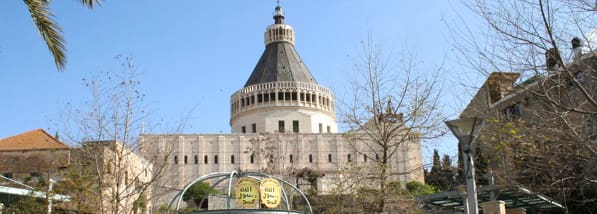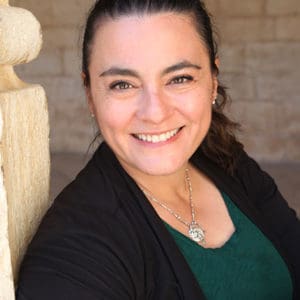The Church of the Annunciation and the Church of St Joseph
In celebration of the debut of The Faithful Traveler in the Holy Land on EWTN, I have been exploring sacred sites in that wonderful land. This month brings us two solemnities that are associated with pilgrimage sites within walking distance of each another: the Solemnity of St. Joseph, Spouse of the Blessed Virgin Mary, falls on the 19th, while the Solemnity of the 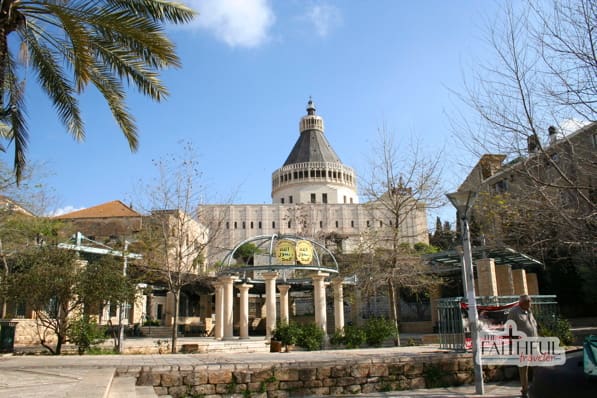 Annunciation of the Lord is on the 25th. In Nazareth, the Basilica of the Annunciation sits atop the traditional site of the home of the Blessed Virgin Mary, and is believed to be where the Archangel Gabriel first met Mary and made his happy announcement. Less than 200 yards away (about 170 meters) sits the Church of St. Joseph, where tradition holds that St. Joseph lived, worked, and where he brought the Holy Family after their return from Egypt.
Annunciation of the Lord is on the 25th. In Nazareth, the Basilica of the Annunciation sits atop the traditional site of the home of the Blessed Virgin Mary, and is believed to be where the Archangel Gabriel first met Mary and made his happy announcement. Less than 200 yards away (about 170 meters) sits the Church of St. Joseph, where tradition holds that St. Joseph lived, worked, and where he brought the Holy Family after their return from Egypt.
The Basilica of the Annunciation and the Church of St. Joseph sit in a complex of buildings operated by the Franciscans, who have been custodians of the Holy Land since the 13th century. On one end is the huge, stylistically modern, two-story Basilica, with a towering 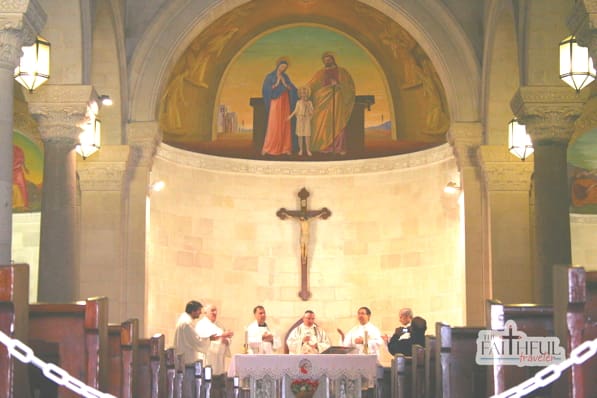 concrete dome and art everywhere for the eye to see. It is the largest Christian church in the Middle East. On the other side of the complex, the Church of St. Joseph sits in its shadow, a small, austere, Romanesque church.
concrete dome and art everywhere for the eye to see. It is the largest Christian church in the Middle East. On the other side of the complex, the Church of St. Joseph sits in its shadow, a small, austere, Romanesque church.
The Basilica of the Annunciation can best be described as a celebration of the Virgin Mary. From the top of its dome shaped like a Madonna Lily, to the Salve Regina carved into the façade, to the bas relief scenes from Mary’s life on the doors, this Basilica honors that young 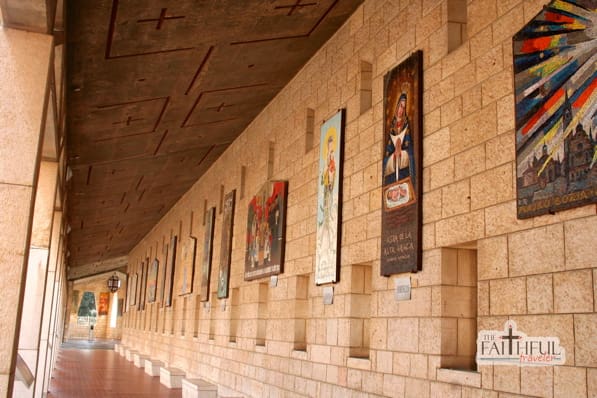 woman who met an angel and who, when told she was to give birth to the Son of God, responded with the greatest YES ever uttered in the scope of human history. The courtyard is decorated with hundreds of artistic renderings of the Virgin Mary, made and donated by countries around the world. It’s awesome, seeing what people from all around the world think Mary looks like. And when you consider that, in every Marian apparition Mary looks different, you realize they might all be right. I love that.
woman who met an angel and who, when told she was to give birth to the Son of God, responded with the greatest YES ever uttered in the scope of human history. The courtyard is decorated with hundreds of artistic renderings of the Virgin Mary, made and donated by countries around the world. It’s awesome, seeing what people from all around the world think Mary looks like. And when you consider that, in every Marian apparition Mary looks different, you realize they might all be right. I love that.
 Entering the basilica from the lower level can be a little discombobulating, especially if it’s a bright and sunny day. Inside, the concrete walls and floors seem to simultaneously suck up and reflect the minimal light coming in from the stained-glass windows. Everything on the lower level points to the main attraction: the grotto in
Entering the basilica from the lower level can be a little discombobulating, especially if it’s a bright and sunny day. Inside, the concrete walls and floors seem to simultaneously suck up and reflect the minimal light coming in from the stained-glass windows. Everything on the lower level points to the main attraction: the grotto in 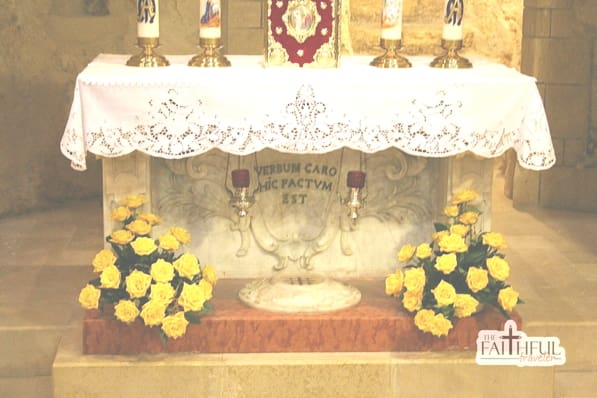 the center of the room. Here, the Angel Gabriel first greeted the young virgin with the words, “Hail Mary, full of grace!” An altar in the center of a cave is inscribed with the words “Verbum Caro Hic Factum Est”: Here the Word was made flesh. When Masses are not being celebrated in the space in front of this room, pilgrims can pass and admire the room from behind a grille. It seems so inconspicuous–it’s just an empty space.
the center of the room. Here, the Angel Gabriel first greeted the young virgin with the words, “Hail Mary, full of grace!” An altar in the center of a cave is inscribed with the words “Verbum Caro Hic Factum Est”: Here the Word was made flesh. When Masses are not being celebrated in the space in front of this room, pilgrims can pass and admire the room from behind a grille. It seems so inconspicuous–it’s just an empty space.
And yet, as the altar states: right HERE, God became man.
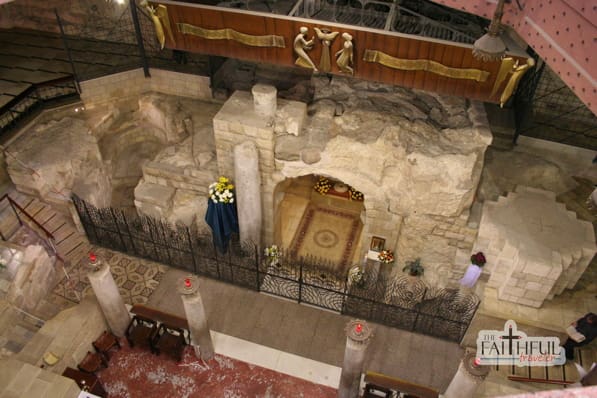
 A hole in the ceiling opens up to the upper level, showing a continuation of purpose–this building celebrates what took place here, and that here is everywhere.
A hole in the ceiling opens up to the upper level, showing a continuation of purpose–this building celebrates what took place here, and that here is everywhere.
Up a spiral staircase, the celebration continues, with images of the Virgin Mary everywhere the eye can see. Art imitates life–for as we know, the Blessed Virgin Mary isn’t blessed and honored simply because of who she is, but because of what she did and continues to do: she introduced the world to the Son of God.
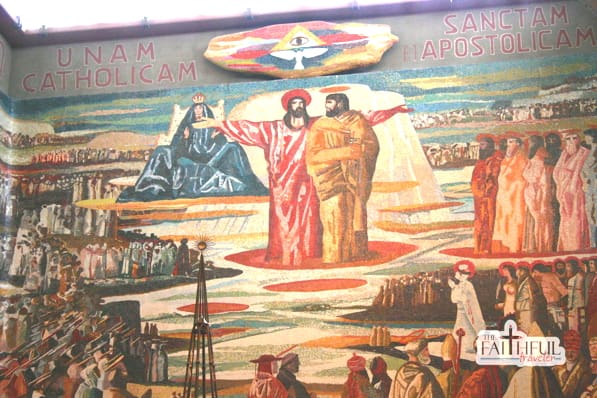
Behind the sanctuary, a huge mosaic celebrates the One, Holy, Catholic and Apostolic Church, as instituted by Jesus and guarded by Peter and his successors. The Virgin Mary sits behind and to the right of Jesus, who stands behind St Peter, holding the Keys to the Kingdom. God and the Holy Spirit hover above all, while saints look on from below.
The Church of St. Joseph is tucked into a little corner of the compound. Built in 1914, it sits atop a series of caves believed to have been used as food and waters storage areas during the 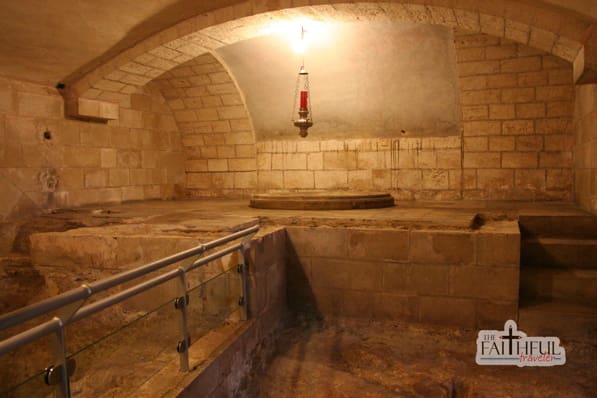 Roman period, and as a baptistery during the Byzantine period. The upper level features images and windows celebrating St. Joseph and the Holy Family–my favorites are the image of the Holy
Roman period, and as a baptistery during the Byzantine period. The upper level features images and windows celebrating St. Joseph and the Holy Family–my favorites are the image of the Holy 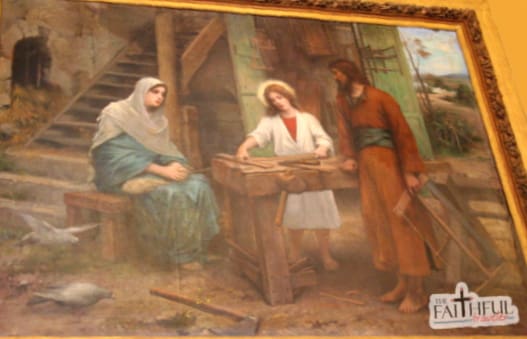 Family above the sanctuary and the painting of Jesus as a young boy helping St. Joseph with his carpentry as the Blessed Mother looks on. The stained glass windows show scenes from St. Joseph’s life–his marriage to Mary, the angel telling him to go to Egypt, and his happy death with Jesus and Mary at his sides.
Family above the sanctuary and the painting of Jesus as a young boy helping St. Joseph with his carpentry as the Blessed Mother looks on. The stained glass windows show scenes from St. Joseph’s life–his marriage to Mary, the angel telling him to go to Egypt, and his happy death with Jesus and Mary at his sides.
This “cul-de-sac of the Holy Family”, as I like to call it, is a wonderful place to visit, to honor and reflect on the lives of two amazing people who did what we are all called to do: trust in God.
The Basilica of the Annunciation and the Church of St. Joseph are only two of the many sacred sites in the Holy Land explored in the new EWTN series, The Faithful Traveler in the Holy Land. DVDs of this series are available at The Faithful Traveler’s website. Join the von Glahns on their next pilgrimage to the Holy Land, June 29-July 8!
Photography: Courtesy of Diana von Glahn, all images copyright, used with permission.



